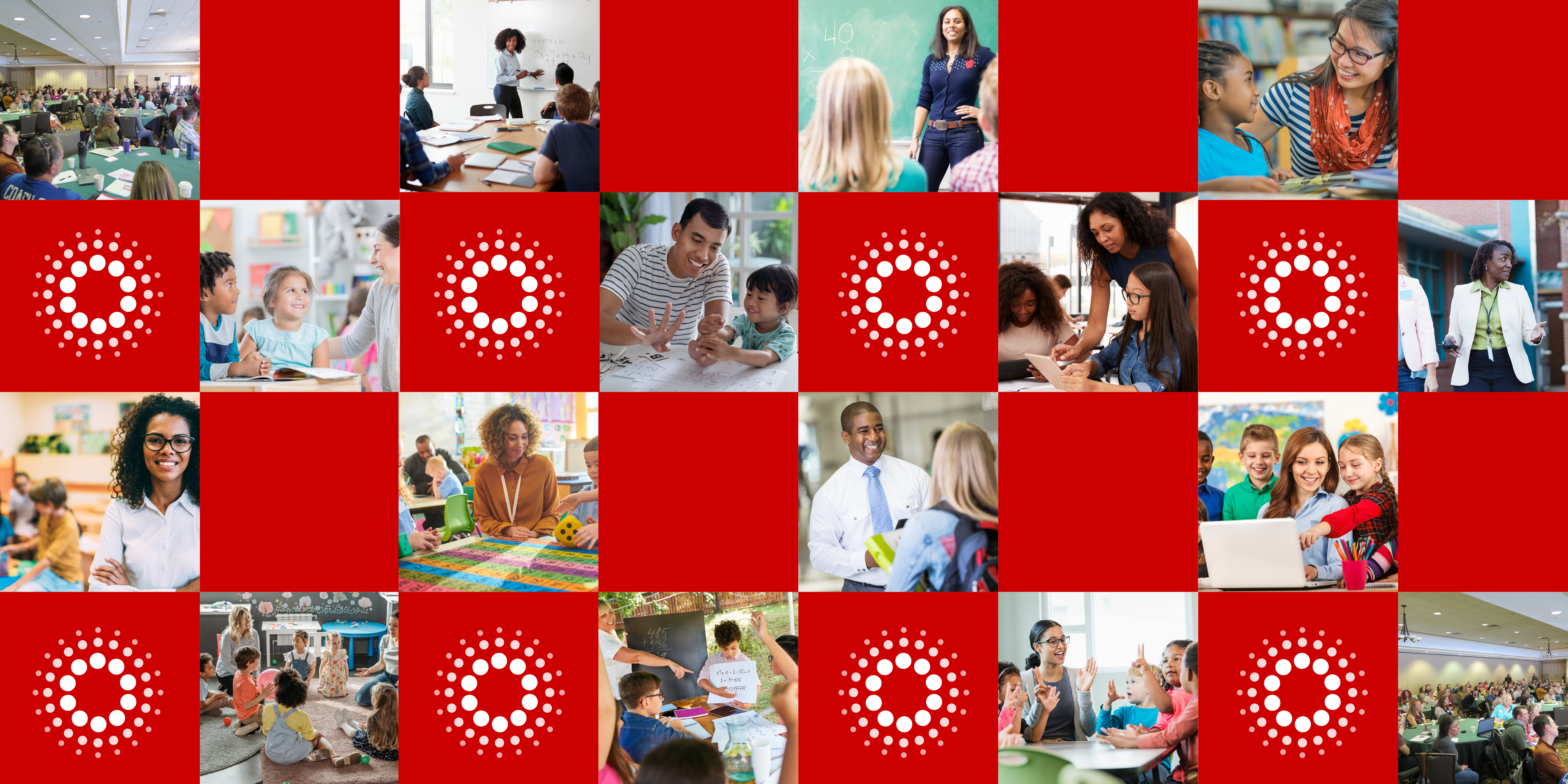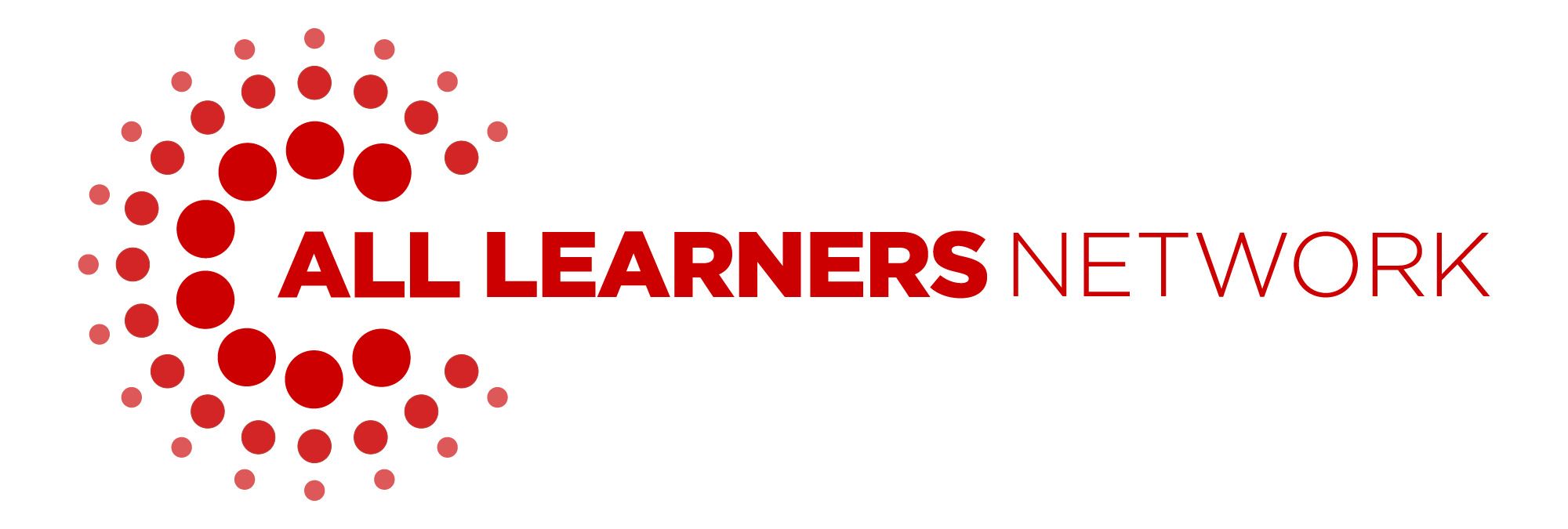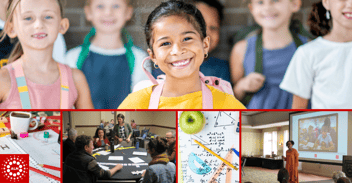
How to Plan for Sustainable, Lasting Math Improvement in Schools & Districts
Math pedagogy is the key to improving math performance and math understanding for all students. Pedagogy is the single most important element in instruction to improve math performance and understanding.
Teachers are the critical element in improving math understanding and fostering positive math identities. To improve their practice, teachers need supportive instructional coaches and administrators equipped to guide and invest in math pedagogy professional development.
Curriculum, math programs and textbooks on their own do not make significant improvements in math understanding. One or two “professional development days” centered on math can help, but this is not enough to create broad and sustainable change. Teachers using research-based instructional math pedagogy and a committed system of support will create the needed, lasting changes that lead to math improvement for all students. When a district or school commits to math pedagogy improvement and provides the resources and support - THAT is when students develop the deep conceptual understanding they need to move forward in their math education.
It’s easy to be focused on curriculum choices – like the math program or online learning program – but a focus on pedagogy is the change that makes a difference in performance, especially for students living in poverty, students of color, and students with learning differences. Clear leadership support for improving pedagogy is necessary. Teachers need to understand the WHY behind the instructional changes and initiatives. We have outlined the three areas to focus on when reforming mathematical practices so all students can learn.
Sustainable, lasting math improvement requires that you:
- Develop a Coaching Model for Improving Pedagogy
- Focus on Launch & Menu
- Start with Intervention
Develop a Coaching Model for Improving Pedagogy
Coaches can be used in a wide variety of ways, though not all the ways coaches are used will result in better instruction. To be effective, coaches need to have a focused role. At All Learners Network (ALN), our recommendation is to have coaches focus on helping teachers interpret data, improve pedagogy, and support intervention.
Focusing a coach’s role on these three areas positions them to improve instruction. At All Learners Network we develop coaches with Coaches Academy. In Coaches Academy, we teach coaches how to analyze both standardized assessments and student work as a means of formative assessment. Using both forms of assessment teachers can develop plans to improve outcomes. By helping teachers learn to look analytically at student work, and considering the ways it might inform instruction, coaches can support teachers to work more successfully with individual student needs.
Coaches can be directly involved in improving instruction through coaching cycles aimed at more inclusive pedagogy. Using an ALN coaching approach, coaches can help teachers learn to identify key student outcomes and the instructional moves that can make those possible. Coaches and teachers, in the model, work together to refine teaching practices aimed at facilitating student understanding in mathematics.
Focus on Launch & Math Menu
ALN work in new schools and districts is often focused on practices that can be adopted relatively quickly and will yield measurable results. In most cases this means we focus on understanding classroom implementation of Launch and Math Menu.
Launch refers to activities that engage all learners in the class (even those with learning differences) in the first 5-15 minutes of a math block. One goal of this technique is to establish purposeful, discussion-rich number sense routines in classrooms. Launch introduces powerful instructional routines which are amplified through consistent exposure over time. It helps to build and maintain a positive learning community that honors identity and cultivates student agency.
Launch also provides a chance for coaches and teachers to work together on a “small goal.” Making use of new instructional techniques during launch can be a way for teachers to “test out” new teaching approaches. It often inspires teachers to find more opportunities for students to explain and share their thinking throughout the math block. Coaches can support teachers who are successful with new pedagogy during launch to make changes to other parts of the lesson.
Supported by research, Launch:
- Builds flexibility with numbers
- Deepens understanding of operations
- Promotes discourse
- Addresses gaps in prior learning as well as foreshadow upcoming learning
Districts who implement Launch:
- Produce improvement in outcomes
- Help teachers learn new practices is a short format
Implementing Menu:
- Supports differentiation and embeds intervention
- Teaches new instructional strategies
- Produces measurable outcomes
Start with Intervention
One reason Math Menu is introduced so early in our work with districts is because of the way it allows for embedded intervention. Focusing on intervention will address immediate needs in a district, leading to better outcomes for students with the most unfinished learning. Math instruction for students with learning differences can be challenging for most Special Educators. Preparation to teach math to learners who struggle is often incomplete, as are “off the shelf” remedial programs with proven results. When we provide special educators and interventionists the tools they need to provide quality and inclusive math instruction everyone benefits including classroom teachers. With specialized support for learners with challenges, classroom teachers are more likely to be able to provide the student with what they need. Having classroom teachers, special educators, and interventionists operating under the same math pedagogy principles provides a unified approach to reach and uplift all students, assuring that every learner is accessing math instruction.
Improving math instruction for all learners is a complex undertaking. It can take three – four years to achieve results that represent true equity for all learners. However, getting started, and seeing some immediate gains, can result from some focused efforts.
- Develop a Coaching Model
- Build math capacity within the school or district through the development of expert instructional math coaches
- Focusing coaching on data interpretation, improving pedagogy, and supporting intervention
- Focus on Launch & Menu
- Start all math blocks with a 5-15 minute launch activity to increase number sense for all students
- Embed differentiated “just right activities” into the math block so all students can access the practice they need
- Start with Intervention
- Include special educators and interventionists early on to assure seamless pedagogy alignment throughout general education and intervention
All Learners Network (ALN) can help you improve student math understanding and math instruction. Whether you are looking for a three-year implementation plan or looking to focus on a few educators, we can help. Go here to learn about how we work with schools and districts.




